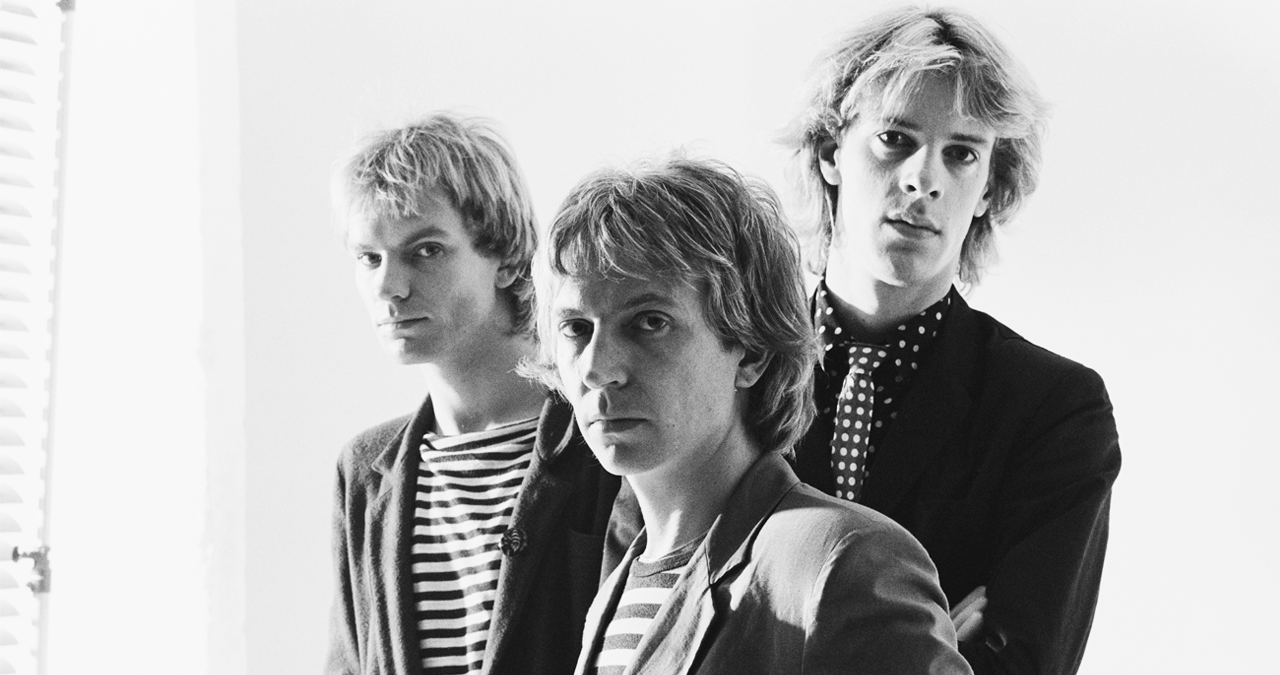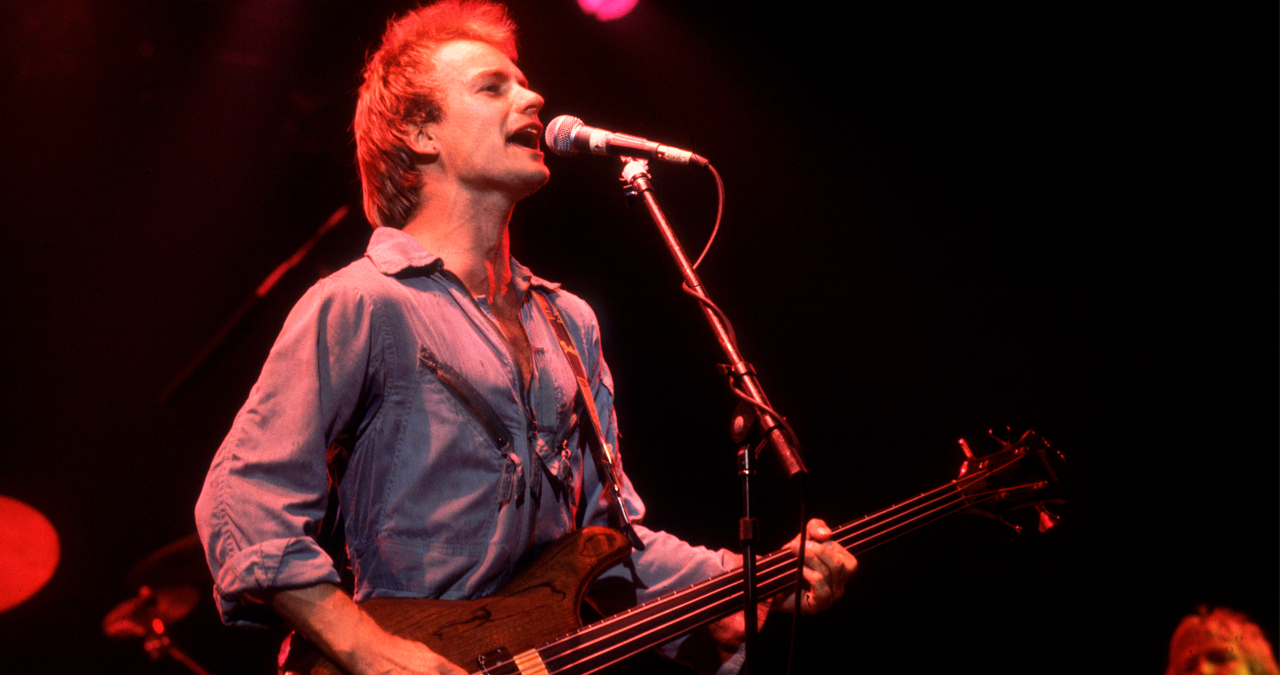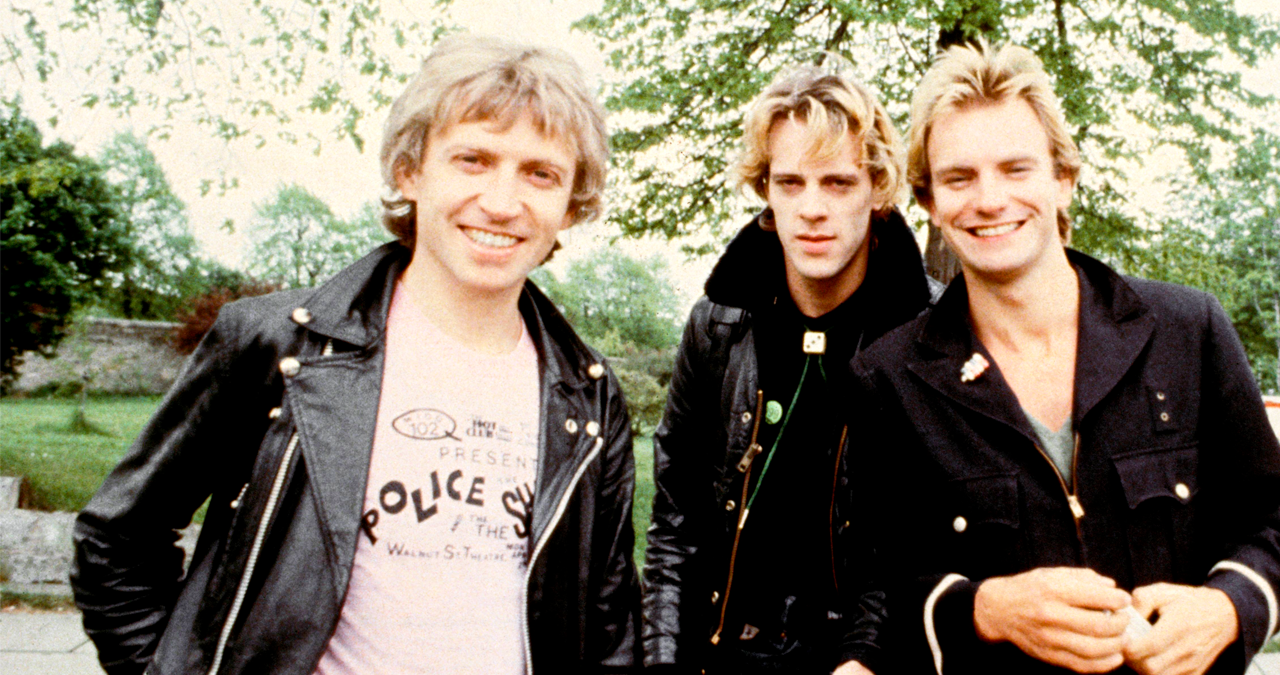“I got up and started walking round the room, singing 'Walking round the room, ya, ya, walking round the room’”: The surprising origins and intricate musical theory behind an iconic Police masterpiece
We take one giant leap toward a song with one of the most recognisable bass lines of all time

The punk era of the mid to late 70s was a truly defining and inspirational age. The spirit of ‘do it yourself’ was in the air. Picking up instruments, regardless of musical ability and penning your own raw material, influenced future guitar and synth bands alike. It was a philosophy that many acts and styles would embrace.
One such band seemed to adopt this form of inspiration albeit with one major difference; the members were incredibly capable musicians.
The Police were a major force to be reckoned with. Sometimes described as a super-group, they were fronted by former teacher, bass player and singer, Sting.
By 1979, The Police were already well-established, with a succesful first album in the bag. Sting has later suggested, however that their second effort, Regatta De Blanc, was the album “where it all clicked’.
The incredible rhythmic backbone, provided by Stewart Copeland on drums, was accompanied by the equally accomplished and inspired playing of Andy Summers on guitar, with Sting completing the lineup on wiry bass and lead vocals.
There were no misgivings about their second album, which hit the top of the UK charts, spawning two incredible classic singles; Message in a Bottle, and our song for deconstruction, Walking on the Moon.
The basis of the song was first dreamt up following a lengthy drinking session after a Munich gig. As Sting recalled in L’Historia Bandido; “I was drunk in a hotel room in Munich, slumped on the bed with the whirling pit when this riff came into my head. I got up and started walking round the room, singing 'Walking round the room, ya, ya, walking round the room'. That was all. In the cool light of morning I remembered what had happened and I wrote the riff down. But 'Walking Round the Room' was a stupid title so I thought of something even more stupid which was 'Walking on the Moon'.
Want all the hottest music and gear news, reviews, deals, features and more, direct to your inbox? Sign up here.

Apart from the obvious introduction and closing sections, there is a degree of ambiguity when scrutinising which sections could be regarded as the ‘verse’ or the ‘chorus’.
The most recognisable section, which is the first part of the song we hear before moving into a vocal section, adopts chorus-like trappings (aka, being unbelievably hooky!)
However, as you listen to the lyrical content, this section alters with its first and second outing, much like a common verse. On this basis, the completely different second ‘B’ section that we hear, should be regarded as the chorus, particularly as this lyrical content does not change from one repetition to the next. That’s the general trait of a chorus right there.
It's a strange juxtaposition, feeling almost as though the verse and chorus elements have been reversed.
The musical context of the track provides several unmistakable nods. In line with the thematic content, there is a huge amount of space in the instrumentation and mix.
The unmistakable drum groove centres around three main kit components; firstly, we have the accented hi-hat pattern, which employs a 16th-note shuffle, accompanied by heavy accents on the 8th notes.
The kick drum plays offbeat 8th notes, which is a highly unusual and innovative concept, with roots drawn from reggae and dub. In keeping with these stylings, Copeland uses a heavy cross-stick, predominantly on beat 3 of each bar.
Being the creative tour de force that he is, this does becomes embellished very quickly, but it is the rim click that endorses a half-time feel, while the hi-hat and bass drum provide forward impetus. Stewart Copeland was particularly fond of using delays within his drum sound during this era, and you can certainly hear this infiltrating all of the percussive elements as the track progresses.
The use of delay, and particularly tape delay, further endorses the concept of the Dub groove.
The highly identifiable bass part is centred around a chord of Dm7. The first note (C) resolves to the tonic (D) pretty quickly, but with a 16th-note ‘push’, ahead of the first beat of what you might regard as the first full bar. The part then rises to the minor 3rd (F) before dropping to the 7th again (C), as the cycle continues in a form of loop.
If you listen very carefully to the original track, you can hear that the bass is doubled, at exactly the same octave and pitch, by a unison piano part. It's not excessively loud in the mix, but it adds another timbral colour, with some higher frequency elements.
Turning our attention to the guitar part within the opening section, the extraordinary sense of space is created through the use of delays and reverberation on a single guitar chord, which is very bright in colour.
If we dissect this elongated chord, it would be best described as D Minor 7 Sus 4 (Dm7 sus4). It's important to note that the suspended 4th, which is the note G, resides at the very top of the chord. This creates an ambiguous and unresolved nature to the harmony. Adding delays and reverberation to this, allows the chord to sustain far longer than the guitar alone would be able to deliver.
Once the vocal makes an entry, the verse harmony is endorsed by the use of short off-beat guitar ‘chugs’, which land at the exact same time as the off-beat kick - another dub hallmark.
We hear a very basic chordal structure here, consisting of a bar of Dm, followed by a half-bar of Bb and C. Interestingly, these chords do not employ any extensions, such as 7ths; they are just straight guitar chords, in simple triadic inversions.
Because of their uncluttered state, the lack of chord extension doesn't draw the ear away from the relentless Dm7 sus4 chord, which continues to interject on the first offbeat, every 2 bars.
Eventually we get to the chorus section - possibly less recognisable as a chorus, but that’s the suggestion!

In this section, the guitar chords become more frequent, in their sustained form. We also hear a new chordal structure, with the use of Bb, F, C & Gm7, all played for a duration of two beats at a time, giving us two chords per bar. There's also interesting use of sporadic triplets, in the bass part of this section which underscores the dub nature of the song once again.
After a further verse and chorus, we head to the outro, which continues to play on the strength of the opening bass riff, as used in the verse structure. Much like the opening, the space affords the drums time to develop, in a wholly improvised way.
Walking on the Moon adopts an interesting place in music history. The simple layers of rhythm and colour are exceptionally effective, demonstrating that minimal playing and production can yield excellent results, in the right hands. Of course, the strength of the original material shores this up considerably; an early demonstration of the strength of the Police’s genius at song arrangement. An arrangement that had developed significantly since its starting point, when a very drunk Sting shambled around his hotel room that night in Munich!
Roland Schmidt is a professional programmer, sound designer and producer, who has worked in collaboration with a number of successful production teams over the last 25 years. He can also be found delivering regular and key-note lectures on the use of hardware/software synthesisers and production, at various higher educational institutions throughout the UK
You must confirm your public display name before commenting
Please logout and then login again, you will then be prompted to enter your display name.

